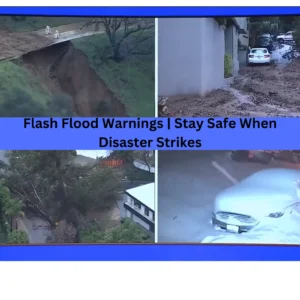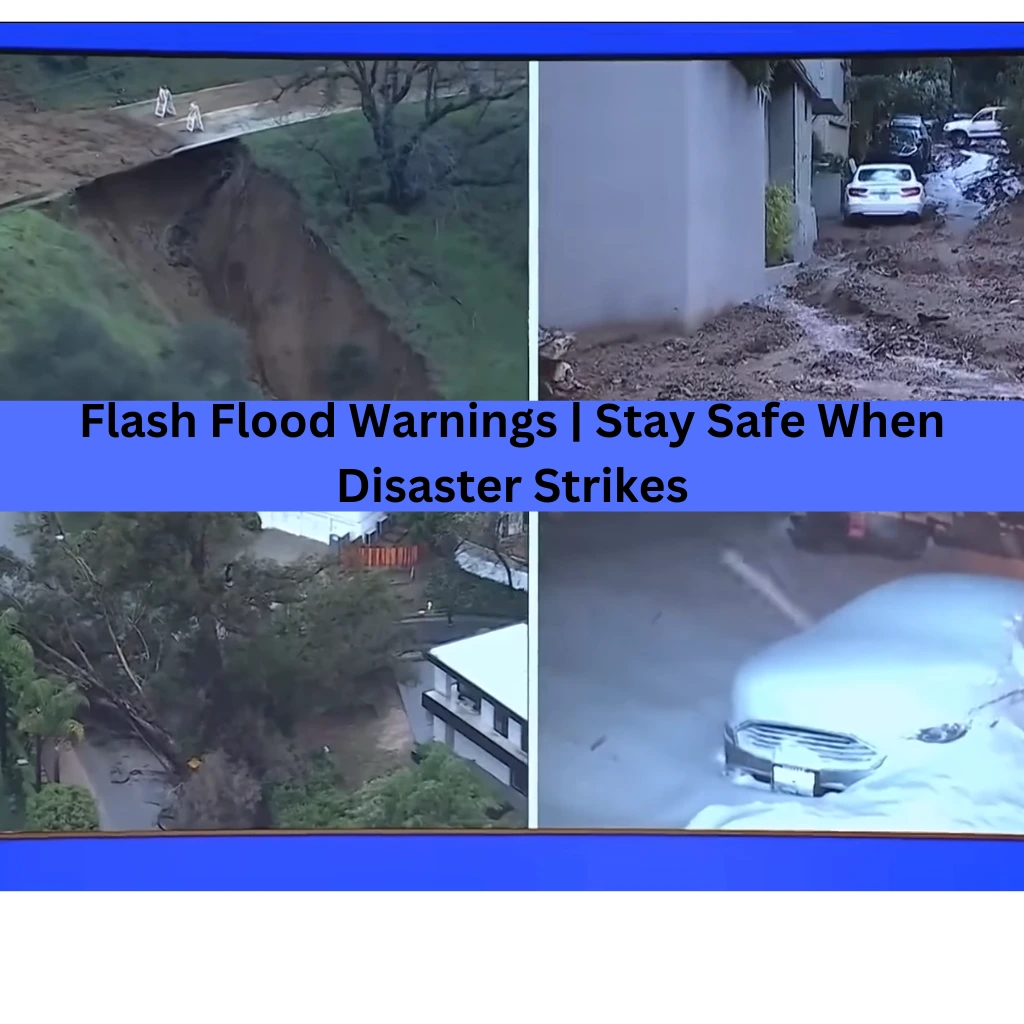Introduction
Recall the devastation that was caused by the tremendous downpours that occurred in Southern California a month ago? Over the course of a few minutes, streets turned into rivers, automobiles were carried away, and homes were submerged in water. This is the scary truth of flash floods: they are sudden, they are tremendously destructive, and they strike without warning.
Across the United States, flash floods constitute a potential hazard; they are not limited to the state of California. It has never been more important to be well-informed and well-prepared for flash flood warnings than it is now, especially because extreme weather events are growing more common.
In this blog, we will explore the realm of flash flood warnings and find out more about them. We are going to discuss what they are, the most recent information on floods, the ways in which you may protect yourself and the people you care about, and the locations where you can locate the supplies you require for preparation and recovery.
What is a Flash Flood Warning?
An urgent warning known as a flash flood warning is issued by the National Weather Service (NWS) in situations where fast flooding is either beginning to occur or is already taking place. These floods do not happen gradually over time; rather, they are frequently brought on by the following:
Heavy Rainfall: Torrential downpours cause the earth to get saturated and cause drainage systems to become overwhelmed.
In the event of a dam or levee failing, the abrupt and catastrophic discharge of water is the result of a structural breakdown.
Ice Jams: Ice blocks in rivers have the potential to break apart, releasing water that has been backed up.
When a flash flood warning is issued for your region, it indicates that you need to take quick action.
Due to the fact that flash floods may be extremely difficult to forecast, warnings are disseminated through several mediums, including television, radio, weather apps, and NOAA weather radios. Paying attention to these warnings is absolutely necessary in order to prevent loss of life.
Additionally, it is essential to make a distinction between a “flash flood watch” and a “flash flood warning”:
The conditions are favourable for the development of flash floods, hence a flash flood watch is issued. Keep your wits about you and keep an eye on the weather.
An alert for a flash flood has been issued because one is either occurring or is likely to occur. Because time is of the importance, you should immediately take precautionary precautions.
Latest Flash Flood News and Events
It is helpful to be informed on recent flash floods since it helps hammer home the hazards and pushes people to be prepared. Featured articles from the news from all throughout the United States :
Homes and businesses in the Texas Hill Country were destroyed by flooding caused by record-breaking rainfall that caused rivers to beyond their capacity.
After a flash flood in a prominent canyon caused emergency evacuations, tourists narrowly escaped rising water in Arizona Canyon. The sudden flood caused the canyon to be evacuated.
In Your Neighbourhood: Include any recent instances of flash floods that have occurred in your city or state to underline the significance of the situation.
The utilization of reliable sources the news stations in your area is very necessary in order to obtain the most precise and up-to-date information on flash floods.
Protecting Yourself During a Flash Flood Warning
Knowledge is wonderful, but taking action is what saves lives. It is important to keep in mind the following straightforward guidelines in the event that a flash flood warning is issued:
“Turn Around, Don’t Drown!” There is no way that vehicles can compete with the power of floodwater. The majority of automobiles may be carried away by flowing water with only 12 inches of water. Under no circumstances should you set foot or drive across flooded regions.
Take immediate action to get higher ground; do not remain in this place! As soon and securely as you can, it is important to reach higher ground. Stable trees, hills, and even buildings may serve as safe havens for people.
Get ready an emergency supply kit: In the event that you need to evacuate, you should provide yourself with essentials such as food, drink, a flashlight, and a first-aid kit.
Flood-prone areas should be avoided. Even in the absence of precipitation, canyons, washes, and other usually dry regions have the potential to become hazardous zones in the case of flash floods. It is prudent to avoid a situation, particularly if rain is forecasted to fall.
Observe the instruction to evacuate: If you are told to evacuate by the authorities in your area, you should do so without delay.

Staying Informed and Prepared
Knowing where to find reliable, up-to-the-minute weather information is essential in flash flood preparedness.
Bookmark these resources:
National Weather Service : Provides forecasts, watches, warnings, and allows location-based alerts.
Local Emergency Management: Look for your city or state’s emergency management websites for tailored preparation guides and instructions.
NOAA Weather Radio: This specialized radio broadcasts continuous weather information and emergency alerts directly from the NWS.
Weather and Emergency Apps: Many apps notify you of nearby potential hazards.
Beyond receiving information, take preventive action.





